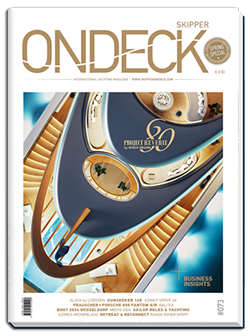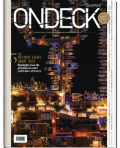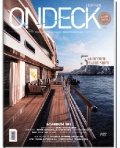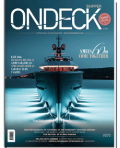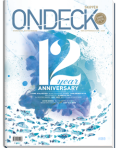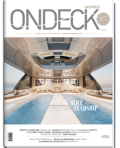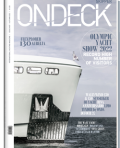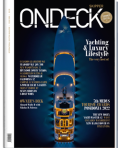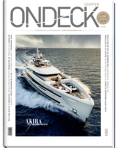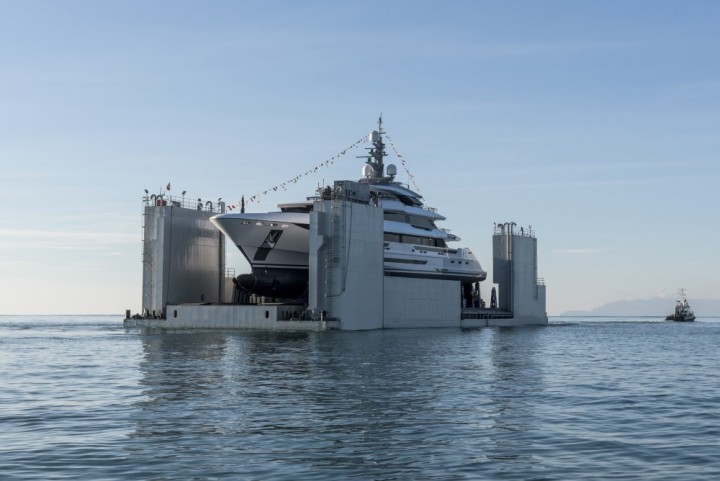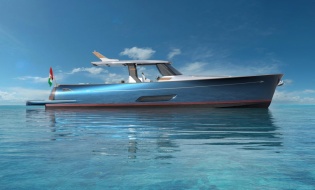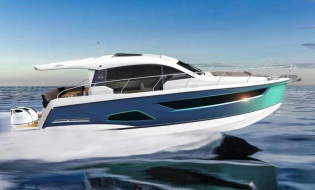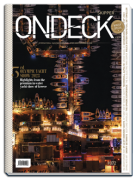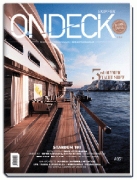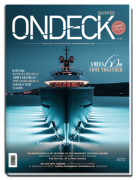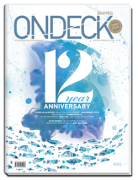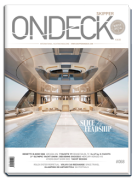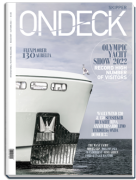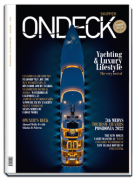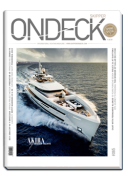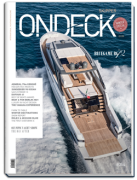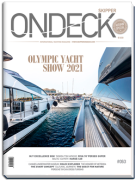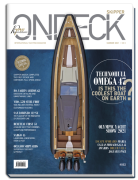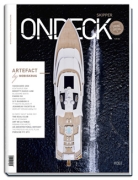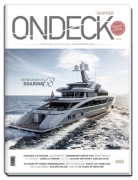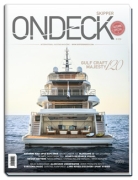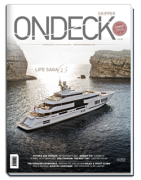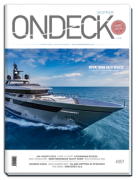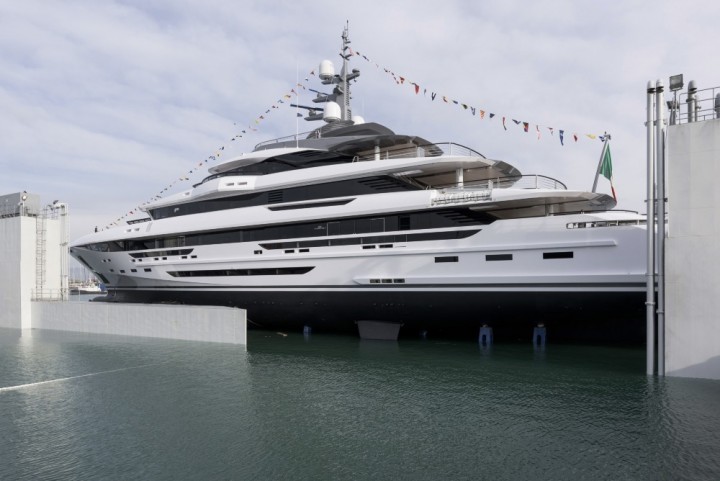
Italian shipyard Rossinavi has presented in their facility of Viareggio its latest superyacht, Polaris, a 70-metre vessel, the largest built by the yard and able to navigate in extreme ice conditions, including the polar areas.
Commissioned by a private client and previously known as Project King Shark, Polaris is a 1,542GT motor yacht developed with an emphasis on yachting lifestyle, able to move from the warm waters of the Caribbean to the sub-zero conditions.
Venice-based architecture and design practice Enrico Gobbi – Team for Design, a longstanding collaborator of Rossinavi’s, is responsible for the interior styling and exterior design of Polaris.
It is highly unusual for boats in the Ice Class category to have an elegant exterior appearance. With this in mind, Polaris is positioned advantageously to favour the exploration of unusual and exciting natural environments, such as Polar Regions, without sacrificing sophisticated design or comfort. Polaris also features the latest diesel-electric propulsion. This is of note because the onboard power management allows to valorise the fuel consumptions, giving advantages in terms of performance and emissions. Another worth-mentioning onboard technology is the Satellite Dynamic System that allows the positioning for ‘dynamic anchoring’ wherever needed, even in extreme weather scenarios.
“The neat and elegant shapes of the yacht are underlined by long, continuous black window surfaces with curved details that soften up and characterise the overall cleanness of the superstructure. Our aim here was to open up the interiors towards the exterior, ensuring an ongoing view of the sea through the decks. This was achieved not by creating huge invasive openings but by instead designing refined, long and slender windows with which we were able to achieve the same goal,” says Enrico Gobbi of Enrico Gobbi – Team for Design.
The interior design, developed in collaboration with Carlo Lionetti, co-director of Team for Design, is contemporary and enriched by eclectic hints inspired by the client’s personal taste, which include precious coating materials that characterise all areas, along with refined details, prestigious textiles and loose furniture items sourced from high end international brands, bestowing on the whole interior a luxurious and distinctive, yet warm and welcoming, atmosphere.
“After four years under construction, we are extremely proud to present this grand superyacht. Polaris is a 70m vessel where our construction skills and technical know-how are perfectly combined. The complexity of this project required a very specific phased approach thanks to the skills we have acquired. Polaris features diesel-electric propulsion and structural ice certification. It is also able to house a full custom limo tender, entirely built in our shipyard. Polaris is the masterpiece where lines and elegance boasts the harmony typical of a modern yacht,” says Federico Rossi, Chief Operating Officer of Rossinavi.
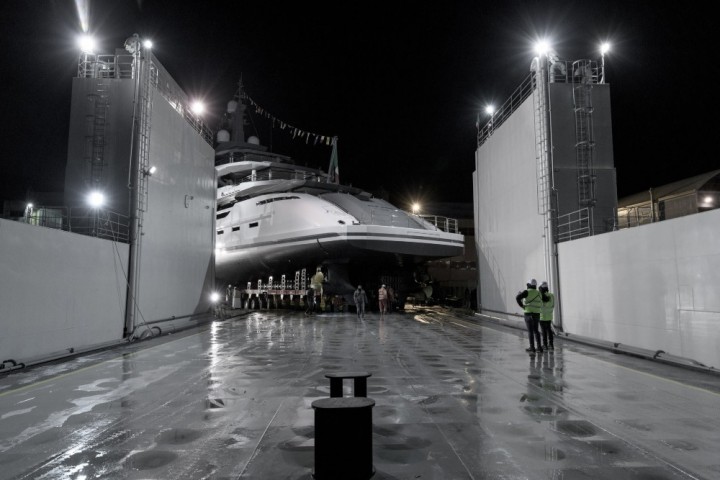
BEHIND THE SCENES INTERVIEW WITH MR. F. ROSSI:
I still can remember that warm early afternoon on beginning Autumn 2016 in our meeting room when the Owner of Polaris, at that time known as Project King Shark, put down very clearly his wishes relevant to the new ‘explorer’ superyacht he wanted to build: a vessel that, as the contractual technical specification stated, needed to be a “full-displacement motor/yacht with raked stem and bulbous bow, skeg, transom stern without structural platform, garage for tenders with side door, three superstructure rows; the propulsion plant will consist of a diesel-electric system feeding two electrical motors connected to two azimuthing pods installed under the transom.”
A couple of pages ahead, when outlining the Class and Flag documents contractually due, another sentence would for sure draw your attention: “Compliance to the Finnish/Swedish Ice Class Rules 2010 relevant to the ships in Class II.”
A quite ‘over the top’ vessel, you will think and, let me say that you are right…, but, how did a Client and a Shipyard reach such a ‘Shipbuilding Agreement’?
As customary, the negotiations for the Contract took a good amount of time, with the overall length starting from 62 m, arriving to a good 68 m, and ending to the final 70 m, with two only fundamental points, say: the exterior/interiors design had to be performed by Enrico Gobbi – Team for Design and the naval architecture by Arrabito Naval Architects. The aggressive outlook of the 48m Prince Shark line was the first requirement we had to honour. Nearly nothing else was clear, except from the fact that the Client wanted a vessel capable to safely sail all over the Oceans, including both the warm areas such as the Tropics as well as the Polar areas and the Baltic Sea, obviously during the winter season.
When approaching such a task, the very first questions to be answered are: how will this yacht be used? Will she be chartered, or not? Will she sail only for limited periods and where?
In a few words, all of us involved we had to set up what I use to refer to as an ‘Operation Profile’.
What does this wording mean? It is clear that there are great differences between a vessel bound to be used only in the Mediterranean during the summer as a private ‘toy’, or another being used as above and, furthermore, due to be chartered in the Caribbean during the winter season, not to speak of an ‘Explorer’ or ‘Expedition Yacht’ ….
Based upon our conversations with the Client, it became clear that the vessel had to be considered, operations-wise, as a ‘Full Time/All Weather Explorer’, even in spite of her slender and aggressive outlook.
The consequent Operation Profile did show that the yearly running hours had to be split into a good 50% - 60% in the ‘at anchor’ situation, with or without the Dynamic Positioning engaged, another 30% sailing in the ECO mode at 11 - 12 knots with low fuel consumption, and the balance in transfer at the 14 - 15 knots ‘cruising speed’ and at pier, with only a mere 1% of the time at full throttle with the engines running at their maximum continuous rating.
All the above considerations and the consequent discussions with the Naval Architects led to a number of decisions, that is:
- The vessel had to be diesel/electrically powered;
- The vessel had to be propelled by means of azimuthing pods, giving the advantage of reducing the machinery spaces due to the lack of the traditional shafting and rudders;
- Consequently, the vessel could easily be equipped with a Dynamic Positioning system using the two pods and the bow-thruster in order to maintain with good precision a fixed position in open or sheltered waters without the need of anchoring.
In the meantime, while tank tests had been carried out by the Naval Architects in order to assess the propulsion power needed for the contract full speed of 17 knots, for the cruising one of 15 knots and for the ECO operation at 12 knots, on our side we had to assess the ‘hotel’ needs in terms of electric power, based upon our previous experience with Numptia (now High Power III) as well as on the wide span of climatic conditions (Summer and Winter in Tropics, Mediterranean and Baltic Sea) that the air conditioning system had to cope with.
During the very same phase, we selected variable frequency generators with D.C. bus for the diesel/electric system due to feed the propulsion motors and elected Rolls-Royce as supplier of the full propulsion package from the alternators to the propulsion motors on one side and to the ‘hotel’ switchboard on the other one.
Taking advantage from the selected variable frequency system, allowing the diesel engines to work at variable speed, and assisted by Rolls-Royce and by Caterpillar, we went through the diesel engines curves, in way to assess the more favourable working point of the generators in terms of power/RPM/efficiency so that, in every operating condition, but especially in the ECO mode at 12 knots, a reduced fuel consumption could be the extra benefit.
Such investigation led to the final layout, consisting of three Caterpillar C32 (rated 1,081 bkW/each) and two Caterpillar C9.3 diesel/alternators (rated 355 bkW/each) with a total available power for propulsion and ‘hotel’ services of 3,953 bkW, apart from the 118 ekW of the Caterpillar C7.1 generator bound to feed the ‘vital’ end users in an emergency.
The ‘electrical balance’ thoroughly studied, shows an operation granting both the ‘hotel’ and propulsion services using the three C32 and one only C9.3 generators in the ‘full throttle’ condition, two C32 for the 15 knots cruising speed, one C32 plus one C9.3 for the ECO 12 knots speed with a
good 6,000 nautical miles range, and, finally, one C32 only with the vessel keeping position with the Dynamic Positioning system in operation.
In order to allow to the Client the operations in Arctic or Antarctic areas, or to sail in the Baltic in winter time, obviously in convoy behind an ice-breaker, a Class II compliance to the Finnish/ Swedish Ice Class Rules is being provided, involving increased hull scantlings and some ‘winterization’ feature such as heated sea-chests and provisions for decks de-icing with warm water.
‘Cherry on the cake’: Polaris is being ‘double surveyed’ both by RINA and Lloyd’s Register of Shipping, and her certificates, besides the highest Class mark, will also contain the “Enhanced Fire Protection” and “Unmanned Machinery Service” notations.
Without any doubt Polaris, of which all of us we are clearly and legitimately proud, is going to become the flagship of Rossinavi fleet.
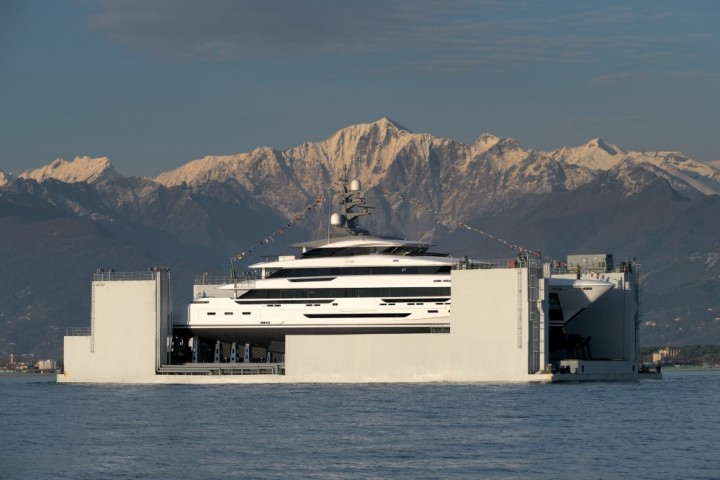
MAIN DATA:
• Length overall: 70.20 m – 230′ 4″
• Moulded Beam: 12.70 m – 41′ 8″
• Draught: 3.35 m – 11′ 0″
• Guests: 2 + 10
• Guest Cabins: 1 + 5
• Crew Members: 1 + 16
• Crew Cabins: 1 + 9
• Superstructure Material: Aluminium
• Hull Material: Steel
• Hull Configuration: Full-Displacement
• Generator Sets: 3x Cat C32 1,081 bkW + 2x Cat C9.3 355 bkW
• Main Electric Motors: 2x Marelli Motori 1,866 kW
• Pods: 2x Rolls-Royce Azipull AZP085 FP
• Maximum speed: 17 kn
• Cruising speed: 15 kn
• Range: > 6,000 nm
• Gross Tonnage: 1,542 GT
• Exterior Design: Enrico Gobbi – Team for Design
• Interior Design: Enrico Gobbi – Team for Design
• Naval Architecture: Arrabito Naval Architects
ROSSINAVI
The story of the shipyard starts in 1980 with the expert carpenters Fratelli Rossi (Rossi Brothers) who had established a reputation for high-quality metal construction of fishing boat hulls. This expertise has allowed Rossinavi to maintain a level of quality that sees each ship crafted entirely in-house, at its facilities in Viareggio and Pisa. This led up to the current 'Rossinavi' brand, founded in 2007. Today, after launching several luxury yachts from 40-70 metres in length, and with several others in production, the shipyard enjoys growing recognition for its rapid ascent into the market and its ongoing position as the only family-owned-and-operated superyacht company in Italy.
ENRICO GOBBI – TEAM FOR DESIGN
Team for Design is a Yacht Design and Architecture firm established in 2005 and based in Italy, in the historic city of Venice. The most unique town on the water is a cradle of art, architecture and is representative of the Italian Style. Not least, native town of Team for Design’s chief designer Enrico Gobbi. Venice has had a relevant influence on the designer’s professional formation, his strong relation both with architecture and water reflects the presence of both these elements in the old town. Enrico Gobbi, after graduating from the world renowned University of Architecture in Venice (IUAV), obtained a specialization in Yacht Design and started working in the marine industry. Many years of experience achieved by collaborating with some of the most renown design companies and shipyards brought him to become the creative mind of Team for Design. Team for Design along with Enrico Gobbi, bring together designers with different views of design and architecture from all over the world under the same firm, hence the word "TEAM" in our company name. We have an absolute passion for exceptional design, our mood is “all is possible: we draw your dreams... with a realistic vision”. Team for Design’s activities include exterior/interior design of custom superyachts and serial production yachts, beginning from the conceptual drawings up to the executive phase and project management during construction. Not least, the development of exclusive residential projects for some of our affectionate Clients brought us to open a Residential Department that creates luxurious interior design projects and prestigious buildings and villas.











